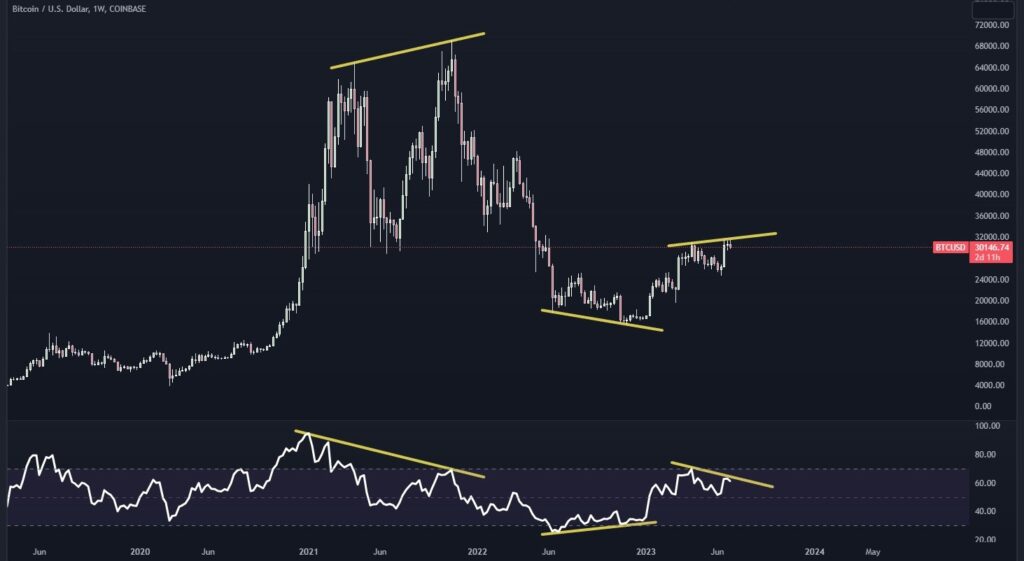Bearish divergence occurs when an asset’s price reaches higher highs while its corresponding indicator shows lower highs, signaling a potential trend reversal.
A bearish divergence is a term used in financial markets, particularly in technical analysis, to describe a situation where the price of an asset is moving higher, but an indicator associated with that asset is moving lower.
In simpler terms, it means that while the price of something like a stock or a cryptocurrency is going up, a related indicator, such as a momentum indicator or a volume indicator, is showing signs of weakness or decline.
This bearish divergence is seen as a warning sign by some traders and analysts because it suggests that the upward price trend may be losing steam or running out of buyers. It could potentially indicate a reversal or a downward correction in the price of the asset.
It’s important to note that bearish divergences are just one tool among many used by traders to analyze markets, and they don’t guarantee that prices will definitely go down. They serve as a signal for caution and suggest that further analysis is needed to make informed trading decisions.
2 Example’s of a Bearish divergence:

